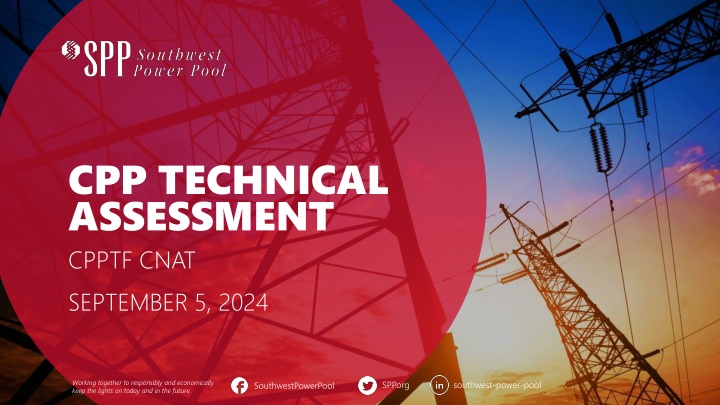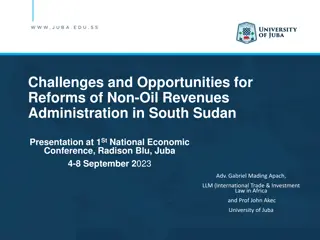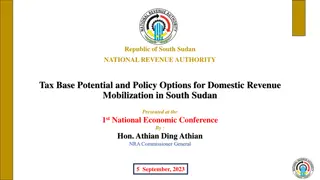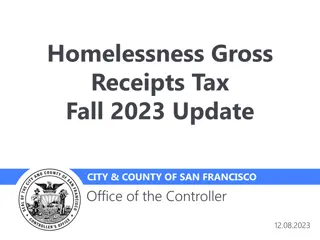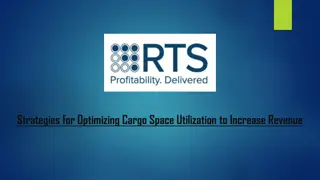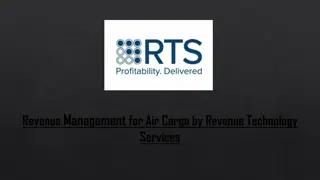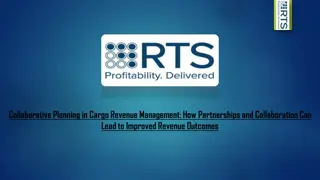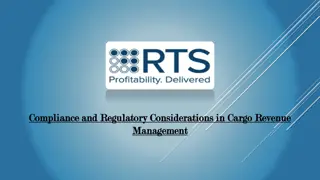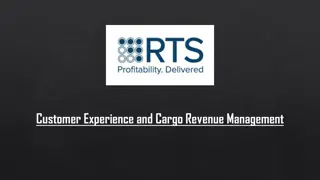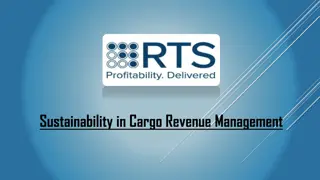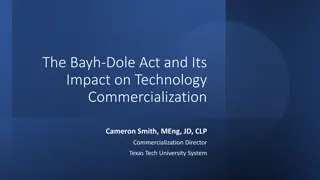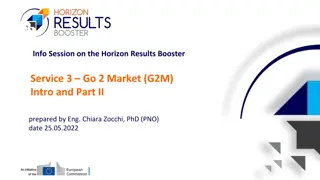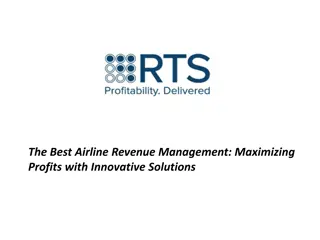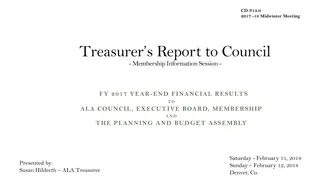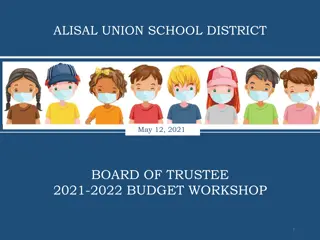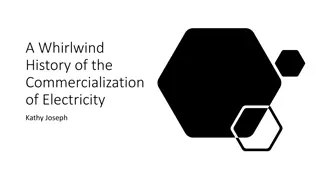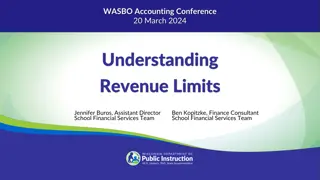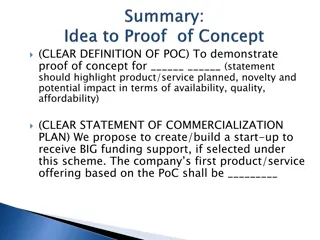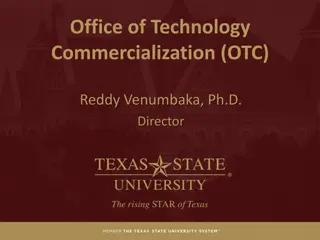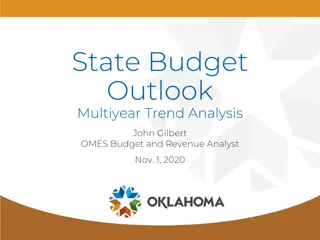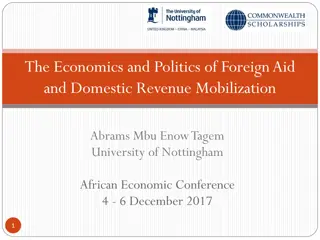Commercialization of University Research: Maximizing Revenue Opportunities
Strategies for universities to generate revenues from research activities, including public subsidies, private donations, patenting, and creating spinoffs. Discover cooperation schemes with the private sector and the benefits of commercializing research results for social and economic growth
Download Presentation

Please find below an Image/Link to download the presentation.
The content on the website is provided AS IS for your information and personal use only. It may not be sold, licensed, or shared on other websites without obtaining consent from the author.If you encounter any issues during the download, it is possible that the publisher has removed the file from their server.
You are allowed to download the files provided on this website for personal or commercial use, subject to the condition that they are used lawfully. All files are the property of their respective owners.
The content on the website is provided AS IS for your information and personal use only. It may not be sold, licensed, or shared on other websites without obtaining consent from the author.
E N D
Presentation Transcript
CPP TECHNICAL ASSESSMENT CPPTF CNAT SEPTEMBER 5, 2024 Working together to responsibly and economically keep the lights on today and in the future. SPPorg southwest-power-pool SouthwestPowerPool
BASE MODEL OPTIONS (MODIFIED ITP BR) Inclusion of generators for dispatch 1.All generators up to maximum available 2.All generators up to assumed accredited amounts 3.Existing + firm + resource plan generators with high capacity value Dispatch priority Base Assumptions Replace ITP BR and/or GI Base Leverage MEM Input Model Existing + firm + resource plan 1.All generators simultaneously 2.All resource plan generators incremental to existing + firm Definition of load groups for sink Options from each group could be mixed and matched to form a recommended option 1.Deliverability area 2.Demand group/control area 3.LRE Inclusion of load groups in dispatch Options are in order of most to least disruptive comparative to today s BR methodology 1.All load areas 2.Only load areas experiencing generation shortfall 2
MODEL SCENARIO APPROACHES GOF Analysis Simple DC FCITC by POI Deliverability Transfer Scenarios Option 1 ERIS - ensure gen deliverability to footprint (identify local violations only) Nameplate / requested amount dispatch scenario Could leverage GOF type of analysis NRIS+ - ensure gen and load deliverability Nameplate / requested amount dispatch scenario (exclude out of DA violations) Accredited amount dispatch scenario (include out of DA violations) Perform analysis per customer request type Dispatch existing + firm + RP simultaneously or incrementally? 3
MODEL SCENARIO APPROACHES Deliverability Transfer Scenarios Option 2 ERIS - ensure gen and load deliverability Nameplate / requested amount dispatch scenario (exclude out of DA violations) Accredited amount dispatch scenario (include out of DA violations) NRIS+ - ensure gen and load deliverability Nameplate / requested amount dispatch scenario (include out of DA violations) Accredited amount dispatch scenario (include out of DA violations) Use to invalidate certain out of DA needs from nameplate scenario Perform analysis for all generation regardless of customer request type Dispatch existing + firm + RP simultaneously Traditional DISIS 4
MODEL SCENARIO APPROACHES CRIS Transition Study Simultaneous feasibility analysis for common impacting generators Multitude of transfer scenarios based on TDF criteria NRIS+ Before ERIS Analyze NRIS+ as a baseline for dispatch and violation identification Separate NRIS+ dependency on ERIS through incremental dispatch of remaining ERIS 5
MODELING AND ASSESSMENT FOOTPRINTS ERIS CRIS Deliverability Areas (ERIS Transfer) Each colored arrow pair represents a different transfer scenario (i.e. 3 ERIS per model) 6
MODELING AND ASSESSMENT FOOTPRINTS NRIS+ Inter-LOLE and Deliverability Area (NRIS+ Transfer) Each unique arrow represents a different transfer scenario (i.e. 6 NRIS+ per model) 7
MODEL SCENARIO APPROACHES OTHER Augment all options with economic, stability and short-circuit analysis to meet holistic objectives and ensure reliable interconnection Maintain current TDF thresholds Deliverability Transfer Scenarios Perform analysis on existing + firm fleet for service protection Sink dispatch Scale for ERIS ECDI for NRIS+ Each option portrays a different level of reliability and how much ownership to take of resource expansion plan 8
UPCOMING METHODOLOGY DISCUSSIONS FOR WHITEPAPER DEVELOPMENT Unplanned customer requests Identification and treatment of sub-optimal customer requests Intra-queue priority Need for separate analysis? Consideration of previous study portfolio Impact to timing of milestones Impact to analysis Planning for customers only vs. full resource plan in initial reliability assessment When to build transmission Usage of economic analysis 9
